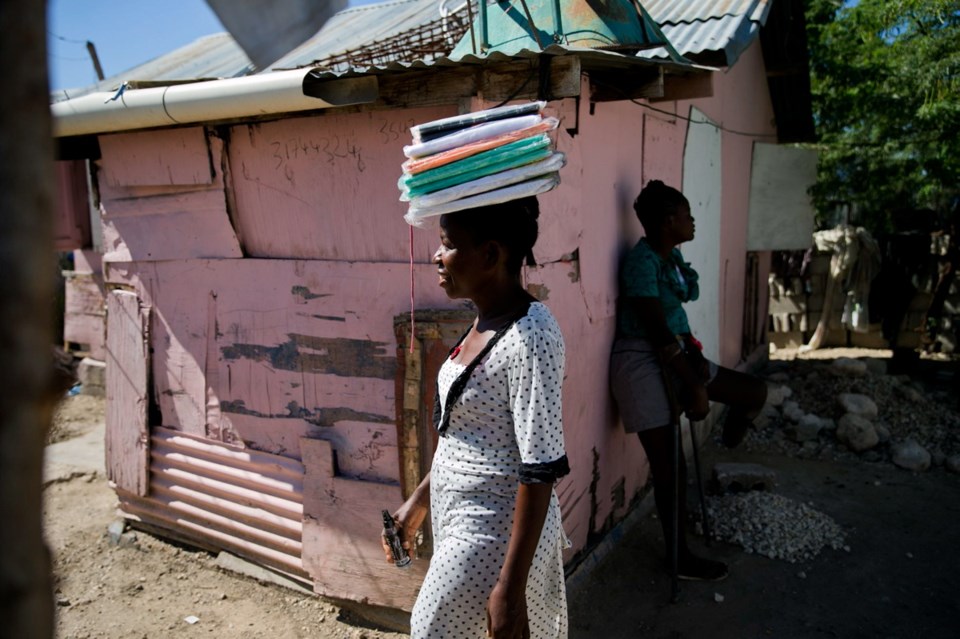CANAAN, Haiti — Just before 5 p.m., Marie-Mislen Thomas’s house fell on top of her three children.
In the first nightmarish hour after a massive earthquake devastated Haiti on Jan. 12, 2010, the Thomases were able to pull their sons Chilo and Jameson from the rubble.
It took them hours more to find two-year-old Rose-Berline.
Her foot was crushed, but she survived with help from a Cuban doctor. A French charity moved the Thomases to Canaan, a swiftly growing shantytown on empty land two hours from their destroyed home in the capital. Another non-governmental organization gave Rose-Berline a prosthetic lower leg and crutches.
Then the Thomases and hundreds of thousands more Haitian earthquake survivors were left on their own.
On the 10th anniversary of the quake, the Thomases live in a rotting two-room shack that floods when it rains in Canaan, which has become the largest slum in the Caribbean. Home to more than 300,000 people, Canaan has no running water, electricity or other public services despite repeated promises that NGOs, foreign governments and Haitian officials would help.
Rose-Berline has outgrown her prosthesis and a pair of crutches provided by foreign aid workers. At 12, she runs the Thomas household while her mother works selling housewares in the street. The bone has grown out of her stump, making a new prosthesis impossible to fit, and the Thomases don’t have the money to pay for an operation.
For observers, the fate of earthquake victims like Rose-Berline shows outside actors’ inability to follow through or make lasting positive change with the billions spent in Haiti after the earthquake, which killed hundreds of thousands and left more than a million homeless. The final death toll remains debated.
“The international community was very efficient during three or four months to provide water, shelter in the form of tents and provisional shelters, provide medicine, food, etc.,” said Leslie Voltaire, a Haitian urban planner who has worked to improve conditions in Canaan.
Asked about the long-term response, he offered a different evaluation.
“It has been a disaster,” he said. “All the displaced people are found in Canaan or other slums area. They don’t have real shelter. They have been building by themselves and without proper guidance by the state. If there is another earthquake, it will crumble again.”
As the 10th anniversary of the earthquake approached, many NGOs said they were deeply concerned about the conditions for quake survivors and the Haitian population overall.
The organizations Doctors Without Borders, for example, said efforts to strengthen Haiti’s hospitals, clinics and community medicine had been gravely neglected as global attention diverted from the country.
“Most medical humanitarian actors have left the country and Haiti’s medical system is once again on the brink of collapse amid an escalating political and economic crisis,” Hassan Issa, the group’s head of mission in Haiti, said in an emailed statement.
Marie-Mislen Thomas, 41, and her husband Sadilor, 48, a mason, took out a loan to pay for school for their five children, who range in age from four to 14. But the couple used the money for basic needs like food last year as the Haitian economy slumped amid paralyzing political protests.
“My kids don’t go to school, they’re now playing with kids who are a bad influence,” Marie-Mislene said. “I am hoping that one day I can move my kids from this neighbourhood, move them to something better.”
Rose-Berline says her dream is to to become a nurse.
“I would love to help people in the future. I wish that my father could find work and help us finish school,” she said. “I hope I can do more when I grow up.”
Other residents of Canaan are less hopeful about the future.
Jean-Claude Jean, 50, was brought to Canaan by United Nations aid workers and lives in a plywood shack with sheet-metal roof.
“They gave me a shelter for three years and said that it was only temporary. Now it’s 10 years later,” he said.
He and his wife sell meat and poultry across from foul-smelling latrines, which are overflowing because they aren’t regularly emptied.
A public school was built by an NGO in Canaan but is closed because there are no teachers to staff it.
“We have been left alone. No one ever said anything, no state presence, or the organization that brought us here,” Jean said.



